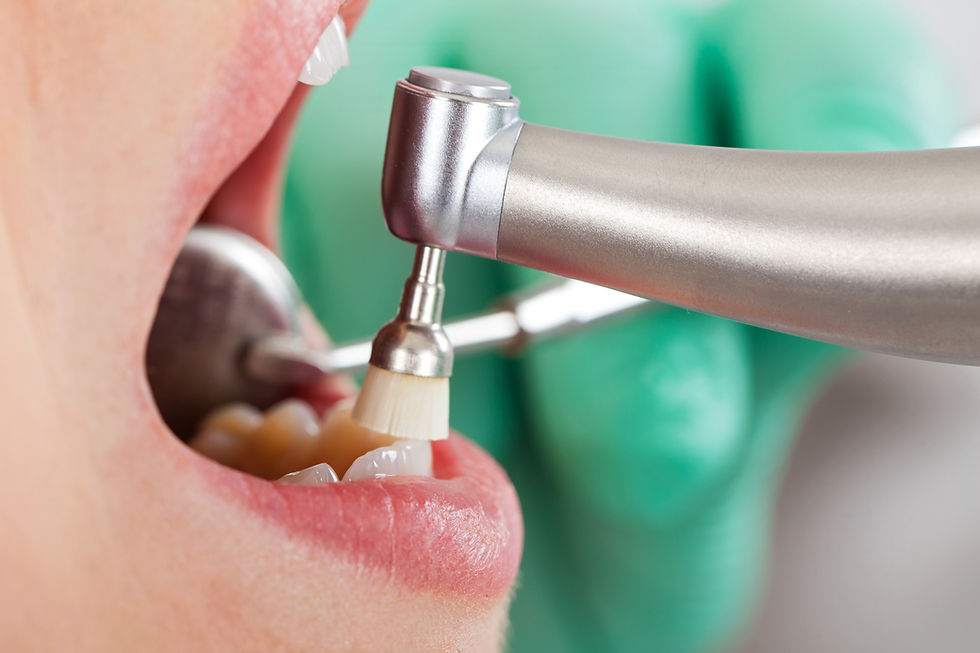
Dental care is a vital component of overall health, and misconceptions about dental procedures can lead to anxiety and avoidance of essential treatments. In this blog post, we'll shine a light on common myths surrounding dental procedures and provide accurate information to help you make informed decisions about your oral health.
Myth 1: Dental Procedures Are Painful
Fact: Modern dentistry has come a long way in terms of patient comfort. Dental procedures are typically performed under local anesthesia, which numbs the area being treated, ensuring minimal to no pain during the procedure. Dentists prioritize patient comfort and employ techniques to minimize discomfort.
Myth 2: Root Canals Are Extremely Painful
Fact: Root canals have garnered an undeserved reputation for being excruciatingly painful. In reality, root canal procedures are performed to alleviate severe toothache caused by infection or damage to the tooth's pulp. With local anesthesia and advancements in techniques, most patients report experiencing little discomfort during or after the procedure.
Myth 3: Braces Are Only for Kids
Fact: Braces are not limited to children and teenagers. Orthodontic treatment can benefit individuals of all ages who seek to improve their bite, align their teeth, and enhance their smile. With options like clear aligners and less conspicuous braces, adults can achieve the smile they desire without the stigma of traditional metal braces.
Myth 4: Teeth Whitening Harms Tooth Enamel
Fact: Professional teeth whitening, when performed under the supervision of a dentist, is safe and effective. The bleaching agents used in whitening treatments are designed to break down stains without compromising tooth enamel. It's essential to follow your dentist's recommendations for whitening products and procedures.
Myth 5: Dental Implants Are Only for Aesthetic Purposes
Fact: Dental implants serve both functional and aesthetic purposes. While they do provide a natural-looking solution for replacing missing teeth, implants also restore proper chewing function, maintain jawbone health, and prevent neighboring teeth from shifting. Dental implants are a long-lasting, versatile option for tooth replacement.
Myth 6: You Should Avoid the Dentist During Pregnancy
Fact: Regular dental checkups are important during pregnancy. Hormonal changes can lead to oral health issues, such as pregnancy gingivitis and cavities. Dentists can provide safe treatments and guidance to ensure your oral health during pregnancy.
Myth 7: Baby Teeth Aren't Important
Fact: Baby teeth play a crucial role in a child's oral health and development. They aid in proper speech, chewing, and guiding permanent teeth into their correct positions. Neglecting baby teeth can lead to complications, affecting permanent teeth and overall oral health.
Myth 8: Extracting a Tooth Is the Best Solution
Fact: Dentists prioritize saving natural teeth whenever possible. Tooth extraction is considered when all other alternatives have been explored. Procedures like root canals and crowns aim to preserve the natural tooth structure and functionality.
Myth 9: Dental X-Rays Are Unsafe
Fact: Dental X-rays are safe and essential for diagnosing dental issues that aren't visible to the naked eye. Modern X-ray equipment emits minimal radiation, and dentists take precautions to limit exposure further, such as using lead aprons.
Myth 10: All Fillings Need to Be Replaced Eventually
Fact: Dental fillings have a lifespan, but they don't universally need replacement. The longevity of a filling depends on factors like the material used and your oral hygiene habits. Regular dental checkups help monitor the condition of fillings and determine if replacement is necessary.
Myth 11: Gum Disease Is Irreversible
Fact: Gum disease, when detected early, can be treated and managed. Scaling and root planing, along with improved oral hygiene practices, can help control gum disease and prevent its progression.
Myth 12: Overbrushing Is Better for Teeth
Fact: Overbrushing can be harmful to teeth and gums. Brushing too vigorously or using a hard-bristle toothbrush can wear down enamel and cause gum irritation. It's important to brush gently for two minutes, twice a day, using a soft-bristle toothbrush.
Myth 13: Bleeding Gums Are Normal
Fact: Bleeding gums are not normal and can indicate gum disease. It's important to address bleeding gums promptly and maintain proper oral hygiene to prevent further complications.
Myth 14: Dental Work Lasts Forever
Fact: Dental work, like fillings and crowns, has a lifespan and may require replacement over time. Regular dental checkups help monitor the condition of dental restorations and ensure their longevity.
Myth 15: You Don't Need to See the Dentist If You Have No Pain
Fact: Pain is not always a reliable indicator of oral health. Dental issues like cavities and gum disease can progress without causing discomfort. Regular dental checkups help detect and address problems before they become painful and more challenging to treat.
In conclusion, separating fact from fiction is crucial for making informed decisions about dental procedures. Modern dentistry emphasizes patient comfort, safety, and effective treatments. Don't let myths and misconceptions deter you from seeking necessary dental care. Consult your dentist for accurate information, personalized recommendations, and a clear understanding of your oral health needs. Remember, a proactive approach to dental care is key to maintaining a healthy, confident smile for years to come.


